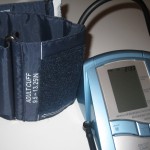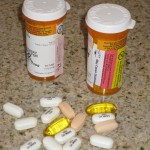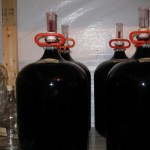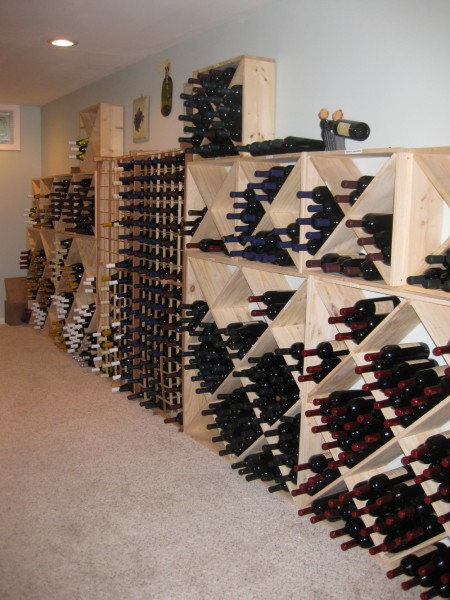Archive for July, 2009
2006
Chardonnay
Proprietors Bob & Phoebe Harper have built a reputation on producing excellent Chardonnays and their gold medal winner ’06 Barrel Fermented Chard extends this track record. The wine displays citrus, apple and melon on the palate and finishes with subtle toasty and creamy caramel notes. Match this smooth and well-balanced white with a summery Grilled Chicken Caesar Salad. Drink now through 2010.
Naked Mountain Vineyard is located at 2747 Leeds Manor Road, Markham, VA 22643. The winery is situated on a beautiful mountainside with an expansive deck overlooking its vineyards. It is opened seven days a week from 11 am to 5 pm. (540) 364-1609.
 The interest in a healthy lifestyle is everywhere present.
The interest in a healthy lifestyle is everywhere present.
Pick up almost any newspaper or magazine, or log on to the web, and the issue of how health and life can be enhanced by choosing wisely is likely discussed.
In the industrialized world, access to health education and the products that make life worth living are readily available. It also brings into sharp focus those countries that do not have the resources or leadership to properly care for their populations. The scenes of poor health, hunger and disease are distressing. We are a most fortunate nation.
Of course, having access to health information and failing to act on it is to potentially squander years of productive living. One must embrace change to achieve benefits. Often that’s not easy. Health discipline is seriously challenged when it comes face to face with a juicy cheeseburger, French fries and a double-dipped ice cream cone. Darn, why can’t have it all?
Well, perhaps we can. Let’s talk wine and health.
No need to extol the pleasures of the fermented grape for practicing wine lovers. If you are sipper, it’s stating the obvious to wax on the enjoyment of a chilled glass of Sauvignon Blanc on a warm summer evening. Or, the bold taste of a Malbec sipped before a cozy winter fire. Tasting is the only act of persuasion needed here.
But, for those who do not drink wine, there is a litany of reasons to take a closer look at what a glass with your evening meal can offer health-wise. Not to mention the social enjoyment that wine and food add to any gathering.
Here is a quick recap of some of the latest health studies published in the May 2009 issue of Wine Spectator on the benefits of moderate wine consumption. And let’s underscore moderate. The abuse of alcohol destroys health; it does not enhance it. So let’s say it just one more time. Everything. In. Moderation.
 Heart
Heart
Since 1991 and the 60 Minutes broadcast titled, The French Paradox, evidence has mounted that wine aids circulation and general heart health. Over two decades of research strongly suggests that wine, particularly red wine, can reduce the risk of arteriosclerosis and heart attacks by as much as 60 percent. A 2007 Harvard study found that men with hypertension could lower their risk of a heart attack by 30 percent by drinking a glass or two of wine daily. Red wine also reduces the bad cholesterol LDL, while simultaneously increasing beneficial HDL. It also combats the buildup of fatty deposits. Wine drinkers also tend to eat healthier diets, smoke less and exercise more—positive health habits with a host of life giving benefits.
Dementia
Several studies show wine consumption may help delay the onset of Alzheimer’s due to the action of grape seed polyphenols that block the formation of plaque proteins in the brain that kill brain cells.
Arthritis
Five to ten glasses of wine a week can reduce rheumatoid arthritis by up to 50%. It also increases bone density in elderly women, possibly lowering the risk of osteoporosis.
 Colds & Flu
Colds & Flu
A polyphenol found in wine called Quercetin—an anti-inflammatory—may block the ability of the influenza virus to grow itself and thus reduce the likelihood of colds.
Diabetes
Wine drinkers earn a lower the risk of developing the disease by 58% over that of non-drinkers.
Throat Cancer
The antioxidants in wine may reduce such cancers by offering protection from the onset of Barrett’s Esophagus—a precursor to esophageal cancer.
Women and Wine
Women should be cautious when considering alcohol in general since studies have shown an elevated cancer risk, especially breast cancer. But, one study revealed that a polyphenol in red wine suppresses the metabolism of estrogen, protecting cells from becoming cancerous. Boston Medical School studies have shown that women who do not binge drink, have adequate folate intake and are not on hormone-replacement treatment only exhibit an increased risk of breast cancer with consumption of more than seven ounces of wine a day. This is an important finding because moderate alcohol consumption lowers women’s risk of death from heart disease, stroke, hip fracture and dementia.
Studies have also shown one to two glasses of wine daily cuts the risk of ovarian cancer in half over non-drinkers.
Lungs
California researches found that men who drink red wine have a lower risk of lung cancer than nondrinkers. Nonsmoking men who drank a glass or two a day were four percent less likely to develop lung cancer that nondrinkers. Even smokers had a reduced rate of the disease but still higher than nonsmokers.
Headaches
In some people wine can cause headaches, more often with red than white. The sulfites in wine are often blamed for this effect but research does not support this theory. More likely, an amino acid call tyramine, found especially in reds, may be the culprit. Tyramine is an active substance that causes dilation and contraction of blood vessels. The substance is created when wine goes through a secondary fermentation called malolactic that softens a wine’s mouth feel and creates an overall richer taste. Tyramine can also trigger the release of adrenaline into the blood stream about three hours after ingestion. This could be the reason why some people who wake at night after drinking wine cannot get back to sleep. Wine lovers simply need to monitor their reaction to drinking and adjust their intake accordingly.
Stomach
Israeli researches found that red wine helps the stomach remove potentially harmful substances found in red meats, aiding digestion and lowering the risk of arteriosclerosis, type 2 diabetes and colon cancer.
The enjoyment of wine has a history extending back over 7,000 years. As modern science delves more deeply into the health benefits of wine, it’s proving our ancestors prescient. The Romans, indeed, had it right—In vino veritas—In wine truth.
 But, as the list of reasons why wine is good for us grows, perhaps we should update the saying to read: In vino veritas et sanitas—In wine truth & health.
But, as the list of reasons why wine is good for us grows, perhaps we should update the saying to read: In vino veritas et sanitas—In wine truth & health.
Published on July 30,2009 in the Culpeper Times.
Today I bottled the last of my 2008 wines.
Overall, it was a successful vintage producing high quality fruit—the key to making decent wine.
As an amateur winemaker, my objective is to bottle all my wines the year following harvest. This is opposed to a professional winery that ages most of their reds—and some whites—for extended periods. A full-bodied professionally made Cabernet Franc can rest in the barrel for up to eighteen months before being transferred to its final resting place, the bottle.
The reason many home winemakers do not employ extended aging is the lack of vessel capacity and cellar space. The use of oak barrels for aging wine is fraught with many problems. Foremost is the opportunity for a host of microbes to take up residence in an oak barrel. Keeping oak vessels clean requires vigilance of the first order. Secondly, while oak barrels are sold in capacities less than sixty gallons, the conventional 227-liter barrel possess the perfect wine to wood ratio for aging. Perhaps more importantly, a standard size barrel weights eighty pounds empty and 600 pounds filled with wine. Not many basement winemakers could easily move a full barrel around their cellar—unless they were built like the Terminator.
 The solution? Six-gallon glass carboys. I have twenty-four of these containers in my cellar and they perform admirably. They are easily cleaned and moved at will, since filled they weigh around fifty-five pounds each. Oak chips fulfill the oak barrel nuance I am seeking in my wines. I learned that technique from the Aussies who use chips and oak staves to create oak impact for much of their wine. Since I will utilize all of the carboys for the incoming ’09 vinatage, my goal is to bottle all of my wines prior to late August. Wine will age nicely in the bottle, and in fact, mine is doing just that as I verily write. No extended cellar aging for this winemaker…the bottle is my barrel.
The solution? Six-gallon glass carboys. I have twenty-four of these containers in my cellar and they perform admirably. They are easily cleaned and moved at will, since filled they weigh around fifty-five pounds each. Oak chips fulfill the oak barrel nuance I am seeking in my wines. I learned that technique from the Aussies who use chips and oak staves to create oak impact for much of their wine. Since I will utilize all of the carboys for the incoming ’09 vinatage, my goal is to bottle all of my wines prior to late August. Wine will age nicely in the bottle, and in fact, mine is doing just that as I verily write. No extended cellar aging for this winemaker…the bottle is my barrel.So if quality fruit is key to a good wine, how does a home winemaker obtain premium wine grapes? A variety of options are available, ranging from Internet purchases to buying grapes from East Coast brokers who have fruit bulk shipped from California.
As an employee of a Virginia winery—Rappahannock Cellars—I have come to know a number of owners and professional winemakers in the industry. All of them have provided me invaluable advice about the science and art of winemaking. And, they are willing to sell me both fresh juice and fruit.
Managing a Virginia vineyard is difficult work requiring constant attention to detail such as leaf pulling, pruning, spraying and irrigation throughout the long growing season. Many commercial wineries are loath to sell wine grapes that have taken so much work to produce. I am grateful to men like John Delmare, Andy Regan, Chris Pearmund, Stephen Barnard, Bill Swain and others who have indulged my passion for winemaking by graciously selling me a small portion of their exceptional fruit. This year I produced the following wines: Chardonnay, Viognier, Pinot Grigio, Riesling, Seyval Blanc, Cabernet Sauvignon, Malbec, Tannat, and Zinfandel.
Given the quality and availability of the 2008 vintage, I produced about 700 bottles of red and white wine; or almost sixty cases. By comparison, an average sized Virginia winery produces about 4,000 cases annually. And to put it in even greater perspective, E&J Gallo Winery bottled 66 million cases of wine last year. That’s a lot of vino.
With the ’08 vintage behind me, I am gearing up to order the necessary supplies for the ’09 harvest, which will be arriving during September and October. I will need wine yeast, sulfur dioxide, new rubber hoses for pumping, corks, bottles, filters and other basic supplies requiring annual replenishment.
As summer moves into its final stages, excitement begins to mount throughout the wine industry. The anticipation felt by the home winemaker is equal to that of the pros. I might be small but my eagerness to produce the best bottle of wine I ever made is the same hopeful expectation of the big boys.




